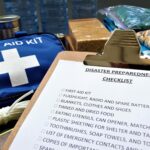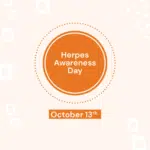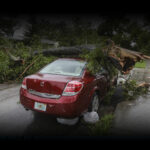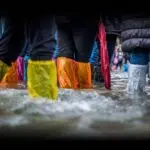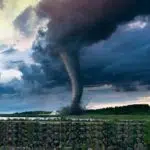International Day for Disaster Reduction is observed every year on October 13. Effective tackling of natural disasters has much to do with governance. One can measure good disaster-risk governance in lives saved, reduced numbers of disaster-affected people, and reduced economic losses. Along with the usual risk factors, the climate emergency indicates that we need a clear vision, plan, and a competently empowered governance that takes action based on scientific evidence for the benefit of the public. It’s time for governments and people to take responsibility if we want to leave a stable planet for future generations
History of International Day for Disaster Reduction
The International Day for Disaster Reduction was started in 1989. The decision was made after a call by the United Nations General Assembly for a day that would be dedicated to building a global culture of risk-awareness and disaster reduction. The International Day for Disaster Reduction acknowledges how people and communities around the world are coming together to reduce exposure to disasters and raising awareness about the importance of timely action.
In 2015, at the Third UN World Conference on Disaster Risk Reduction (held in Sendai, Japan), the international community discussed how disasters hit hardest at the local level. This increases the risk of deaths along with great social and economic upheaval. Disasters that strike without caution displace millions of people every year. Some disasters are made worse by climate change which often reverses sustainable development and disturbs the local ecosystem.
Keeping these risk factors in mind, it was decided that disaster relief plans need to be made from the ground up. The Sendai Framework for Disaster Risk Reduction is people-focussed and action-oriented in its approach. The framework focuses on disaster risk reduction and offers solutions to the risk of small-scale and large-scale disasters caused by man-made, or natural hazards. It also takes a look at the related environmental, technological, and biological hazards and risks. The success of good planning is making sure that the disaster reduction framework is multi-sectoral, linking policies in areas such as land use, building codes, public health, education, agriculture, environmental protection, energy, water resources, poverty reduction, and climate change adaptation.
International Day for Disaster Reduction timeline
Evidence shows the first risk management efforts are made in 3200 B.C.
British and Indian governments come together for the relief efforts of the 1740 famines
A modern disaster management framework emerges.
The United Nations International Strategy For Disaster Reduction is formed.
International Day for Disaster Reduction FAQs
What is World Calamity Control Day?
It’s another name for Internet Disaster Reduction Day.
How can we reduce natural disasters?
Nature-based solutions, such as conserving forests, wetlands, and coral reefs, can help communities prepare for, cope with, and recover from disasters, including slow-onset events such as drought. They can also reduce the secondary impacts from non-climate-related disasters such as landslides following an earthquake.
What are the basic aims of the International Decade for Natural Disaster Reduction?
The goals of the decade (U.N. General Assembly 1988) were to facilitate states at risk to develop: A better understanding of the causes of natural disasters. Early-warning systems for hazard events, particularly storms, floods, volcanic eruptions, and pest infestations.
How to Observe International Day for Disaster Reduction
Learn about your community's plans
Most local communities have a plan in place. Find out how your local community plans to fight disasters.
Check the relief management measures at your home
Start at your home. Check if emergency exits, fire extinguishers, smoke alarms, and others are in place and functioning. Inspections like these can prove useful when the need arises.
Write to your local government
Not sure what the disaster reduction framework in your community is? Write to your local government and ask them about it. You could even ask for a brief demo of the disaster management plan.
5 Important Facts About Natural Disasters That Will Blow Your Mind
The climate crisis is here
Since 2011, there have been 154 floods, 16 droughts, and 15 cases of extreme temperature.
Floods are the most common natural disaster
Floods are the most widespread natural disaster, aside from wildfires.
Older persons are the worst affected
Over half the victims of both Hurricane Katrina and Hurricane Sandy were older people over the age of 65.
Natural disasters can spell financial trouble
Hurricane Harvey resulted in an estimated $125 billion in damages.
People are inadequately prepared
About 80% of people do not have a home evacuation drill; 60% are not aware of their town’s evacuation routes.
Why International Day for Disaster Reduction is Important
It saves lives
International Day for Disaster Reduction was started as a way of saving as many lives as possible. It’s a noble celebration that aims to make everyone’s lives easier.
Future generations benefit from it
A functioning natural disaster reduction plan benefits future generations. It ensures that fewer lives are lost and economic losses minimal.
It tackles a host of problems
International Day for Disaster Reduction not only reduces the risks of immediate disasters that may strike but also prepares for related biological, climate, and technological disasters.
International Day for Disaster Reduction dates
| Year | Date | Day |
|---|---|---|
| 2025 | October 13 | Monday |
| 2026 | October 13 | Tuesday |
| 2027 | October 13 | Wednesday |
| 2028 | October 13 | Friday |
| 2029 | October 13 | Saturday |







